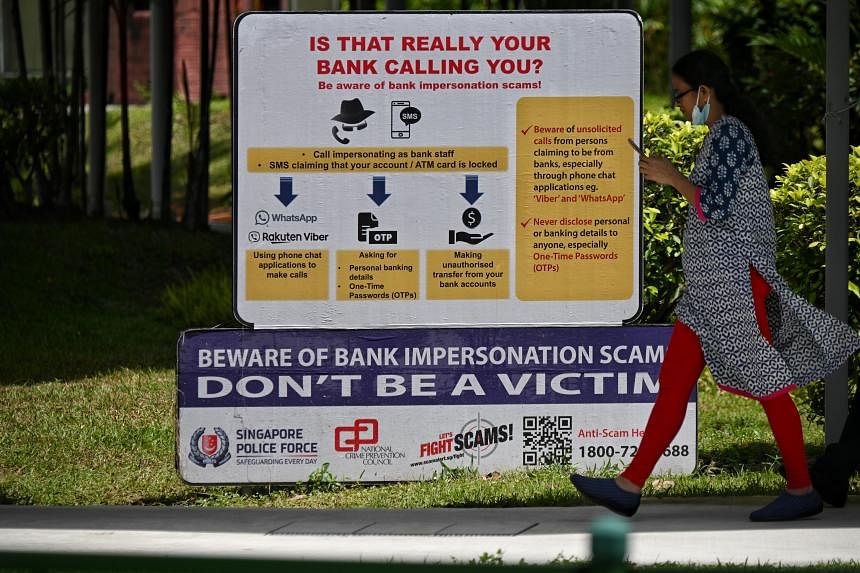SINGAPORE – Following a response by Minister of Manpower Tan See Leng in Parliament on Tuesday, a ministry spokesman has clarified that there is no intention for the Central Provident Fund (CPF) Board to consider the introduction of a scheme to insure members against losses arising from scams.
Responding to questions from several MPs on scam cases involving CPF savings that saw losses amounting to $124,000, Dr Tan had suggested that insurance to assist in the recovery of money lost to scams is being considered under a framework that involves financial institutions, telcos and other entities.
Associate Professor Jamus Lim (Sengkang GRC) had asked the minister whether the Government has considered initiatives along the lines of insurance.
Said Prof Lim: “In usual banking-related frauds, insurance plays a big part in helping to recover fraudulent monies. And in this case, CPF is both a mandatory savings scheme, but is also a very, very big supplier.
“So, it may be possible to secure a fairly competitive insurance rate for the purposes of doing this kind of additional protection.”
Dr Tan replied: “Indeed, we are considering that part of it. This is under the shared responsibility framework that involves the financial institutions, the telcos and many other participating entities.”
“Currently, the government is engaging very closely with all the different industry stakeholders, and we will continue to do so. There is a plan for a public consultation paper to come up in the third quarter of this year. So I suggest that perhaps at that particular point in time, we can delve deeper into the details,” he added.
In response to media queries on the matter, an Ministry of Manpower spokesman said on Tuesday night that insurance schemes are not part of the framework that the Government is developing with industry stakeholders.
Added the spokesman: “The shared responsibility framework focuses on strengthening the roles and accountabilities of the key parties who can mitigate the risk of phishing scams and to preserve confidence in digital payments and banking in Singapore.
“This includes making clear the duties of such key parties – financial institutions and telecommunication companies (telcos) in particular, given the focus on phishing scams – and the responsibility of customers themselves to be vigilant against scams.
“The framework will also establish the appropriate mechanisms for sharing losses amongst these parties when scams occur and duties are breached. This is a distinct and separate approach from scam insurance, where a third party provides guarantee of compensation to an insured party, when he or she suffers scam losses.”
The spokesman also said that for the recent scam cases, CPF monies were paid to verified bank accounts of members. “The Police will spare no effort in tracking down those responsible for such malware incidents and will take tough action against them,” she added.
The framework for the equitable sharing of losses suffered by scam victims was announced in February 2022. Five months later, the Monetary Authority of Singapore (MAS) said a draft for the framework had been delayed due to the complexity of the issues involved.
The recent CPF scam cases were flagged in a joint statement by the CPF Board, the Government Technology Agency (GovTech) and the police last Thursday.
The victim, using an Android phone, clicks on advertisements on social media where an item is sold cheaply and receives a link to download an installation file from a third-party app store to buy the product. Malware is installed on the phone when the file has been downloaded.
The scammer calls or texts the victim and tells him to turn on accessibility services on the phone, which allows the scammer to take control of it.
The scammer may also log in to the victim’s CPF account through Singpass, to withdraw money.
The CPF withdrawal, which is paid to the CPF member’s verified bank account, can then be transferred from that account by the scammer using the stolen credentials.
Since January, the police have received more than 700 reports of victims having downloaded malware onto their phones, with more than $8 million worth of savings lost.
Dr Tan said on Tuesday that based on investigations, there have been nine cases involving unauthorised CPF withdrawals, resulting in $124,000 lost.
He added that the police prevented the ninth case from suffering any losses as they were able to stop the money transfer in time.
Dr Tan said the victims were between 55 and 80 years old. He was responding to a question from Mr Melvin Yong (Radin Mas) on the demographic of the victims, as his constituency has many seniors aged above 60.
As a precaution, the CPF Board and GovTech have introduced Singpass face verification during login to protect vulnerable members who access CPF e-services.
This additional security feature applies to suspicious or higher-risk logins. For example, Android users and those aged 55 and above may be prompted to log in with the feature to combat the latest scam tactics.
Mr Gerald Giam (Aljunied GRC) asked whether there is a potential vulnerability as scammers were able to get Singpass passwords after taking control of the phones.
Dr Tan said there were many reasons why passwords could have been stored in the phones, for example, being kept in the Notes function.
He highlighted measures including initiatives currently worked on by banks, MAS and GovTech to protect banking customers against unauthorised withdrawals from their bank accounts.
He added: “I think scammers, hackers – they are getting more and more creative. So, we have to constantly work at nudging our people, working with one another to keep reminding all of our members, all of our citizens, to always be vigilant.
“At the same time, the Government will also constantly find new ways to step up our precaution to protect our members.”


